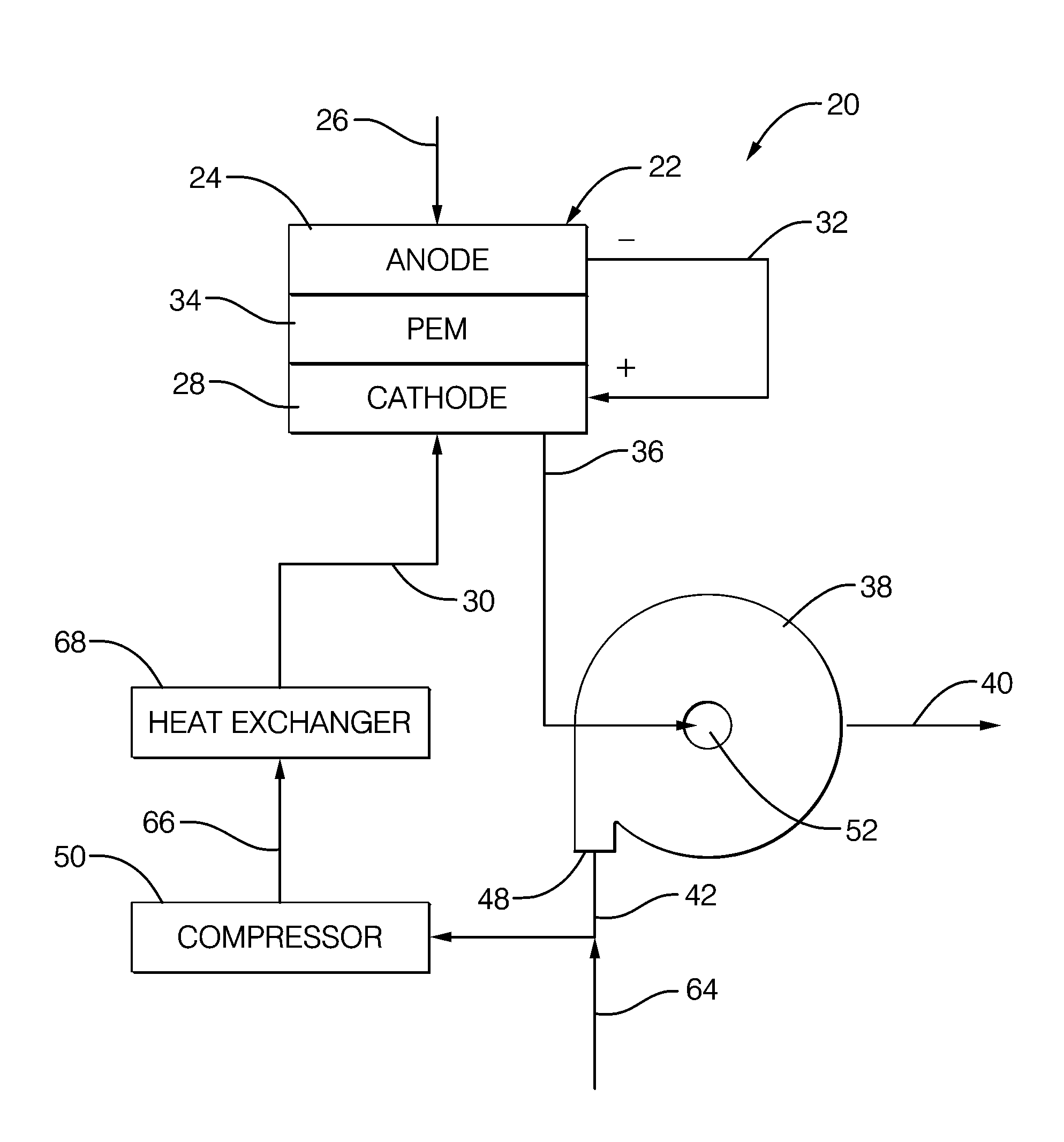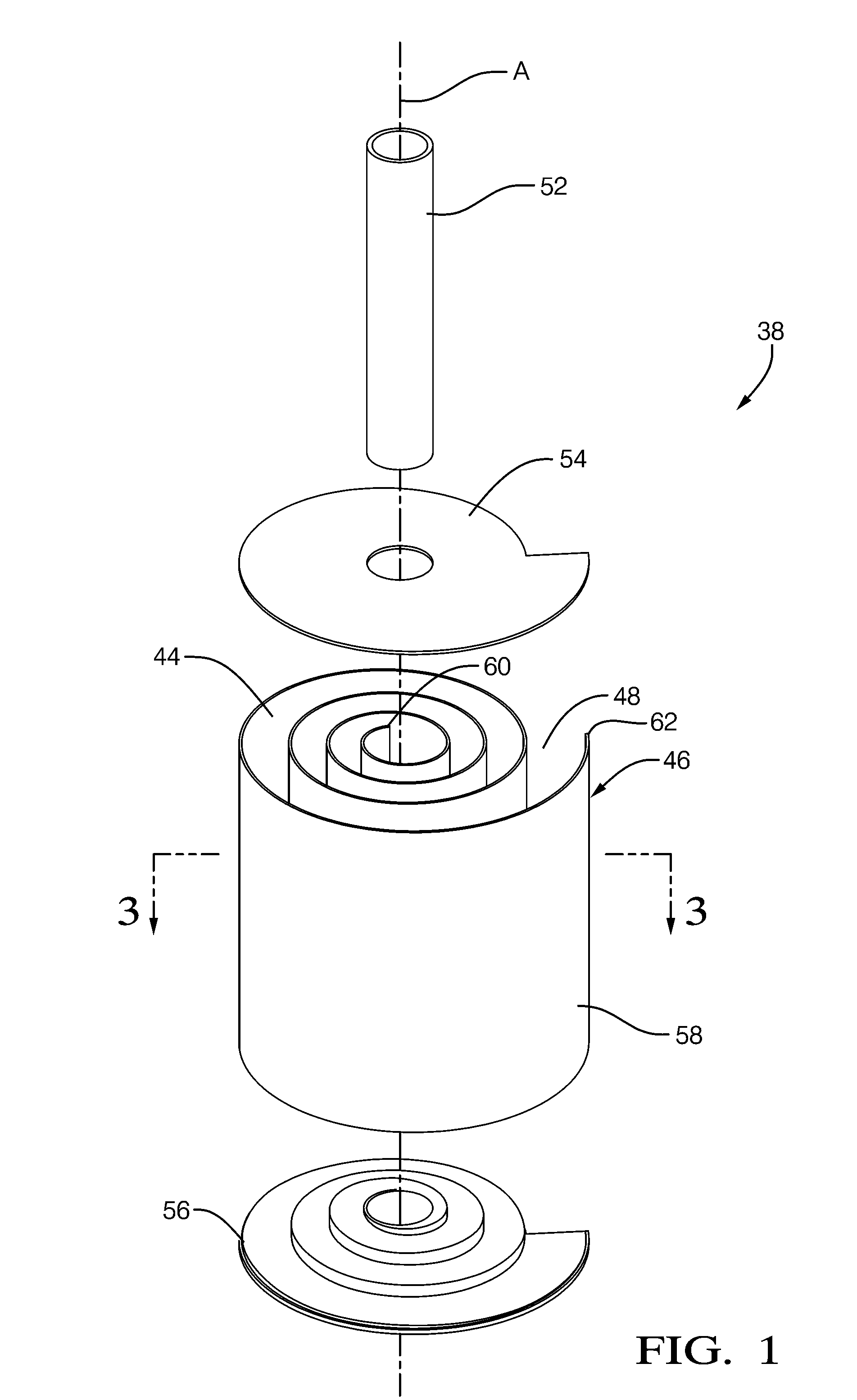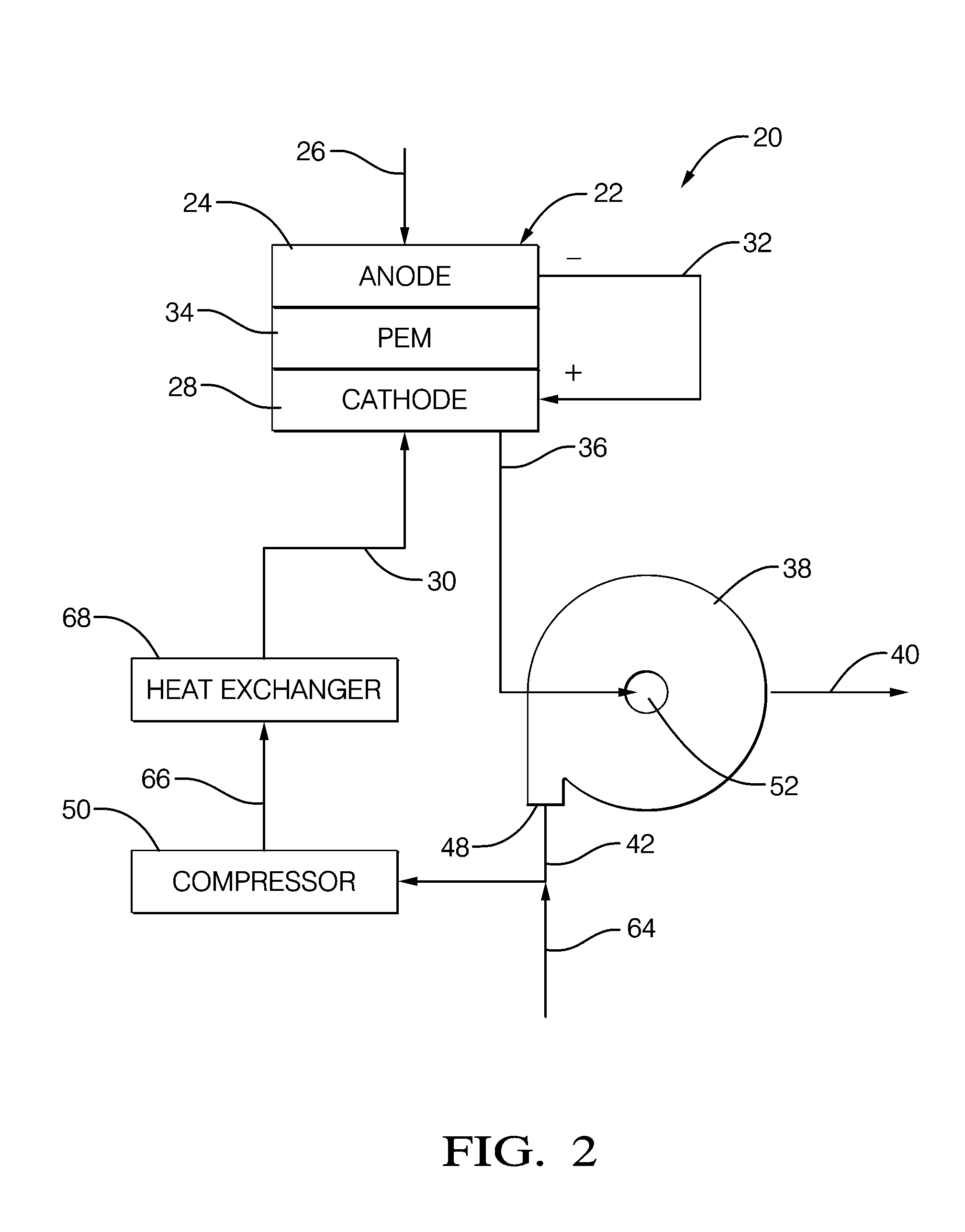Fuel cell assembly
a technology of fuel cell and assembly, which is applied in the direction of fuel cells, electrochemical generators, electrical devices, etc., can solve the problems of fuel cell overheating and its efficiency is substantially reduced, and achieve the effects of less space, less fragile, and more robustness
- Summary
- Abstract
- Description
- Claims
- Application Information
AI Technical Summary
Benefits of technology
Problems solved by technology
Method used
Image
Examples
Embodiment Construction
[0014]Referring to the Figures, wherein like numerals indicate corresponding parts throughout the several views, the invention is a fuel cell assembly 20, generally shown in FIG. 2, for using hydrogen gas and oxygen to produce electrical energy.
[0015]The assembly 20 includes a PEM fuel cell 22, generally indicated, including an anode 24 for receiving a plurality of hydrogen molecules 26 (H2), which ionizes at the anode 24, releasing hydrogen ions, or protons (H+), and electrons (e−) in accordance with the following reaction:
2H2→4H++4e− (1)
[0016]The fuel cell 22 further includes a cathode 28 spaced from the anode 24 for receiving the protons (H+) and electrons (e−) from the anode 24 of the fuel cell 22 and for receiving a flow of compressed and cooled air including oxygen 30 (O2). The flow of compressed and cooled air including oxygen 30 must be properly conditioned with dry bulb temperature about 80° C. (176° F.), pressure ˜2 atmospheres and relative humidity ˜20%.
[0017]The electro...
PUM
| Property | Measurement | Unit |
|---|---|---|
| operating temperature | aaaaa | aaaaa |
| electrical energy | aaaaa | aaaaa |
| cross-sectional area | aaaaa | aaaaa |
Abstract
Description
Claims
Application Information
 Login to View More
Login to View More - R&D
- Intellectual Property
- Life Sciences
- Materials
- Tech Scout
- Unparalleled Data Quality
- Higher Quality Content
- 60% Fewer Hallucinations
Browse by: Latest US Patents, China's latest patents, Technical Efficacy Thesaurus, Application Domain, Technology Topic, Popular Technical Reports.
© 2025 PatSnap. All rights reserved.Legal|Privacy policy|Modern Slavery Act Transparency Statement|Sitemap|About US| Contact US: help@patsnap.com



